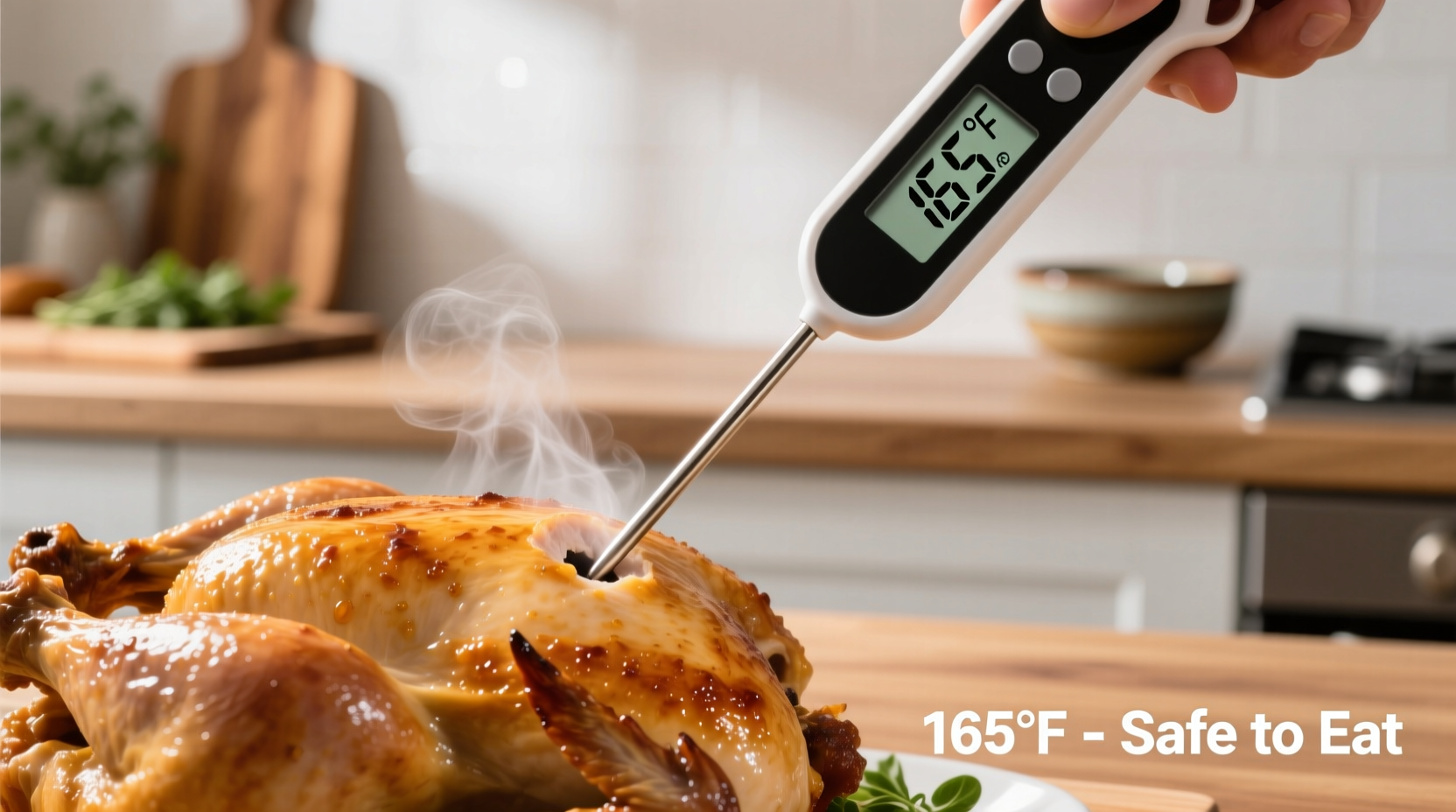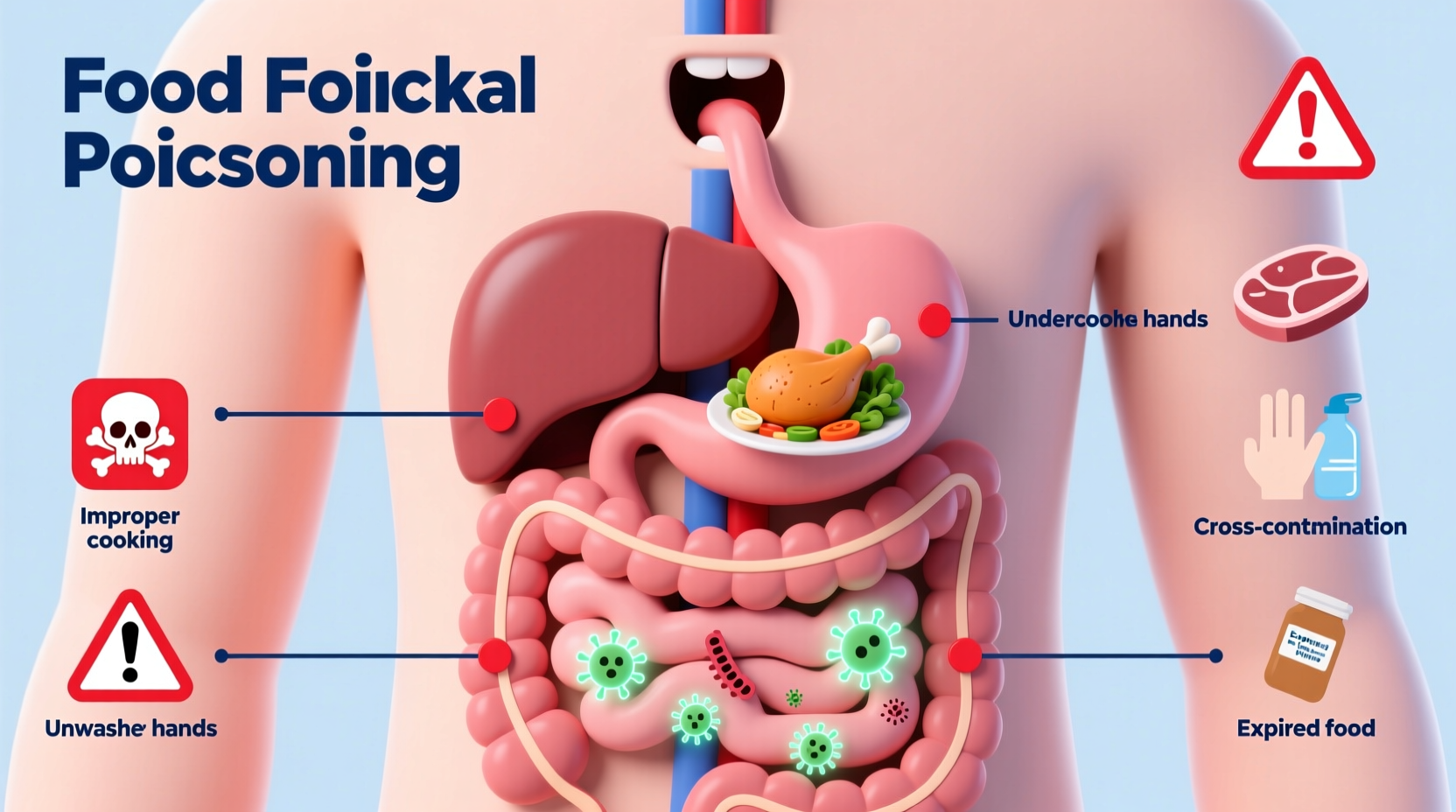Understanding exactly how food poisoning happens is your first line of defense against this common but preventable health issue. Each year, 1 in 6 Americans (approximately 48 million people) experience foodborne illness according to the Centers for Disease Control and Prevention (CDC), with 128,000 hospitalizations and 3,000 deaths annually. The good news? Most cases are completely avoidable with proper food safety knowledge.
Your Complete Guide to Food Poisoning Causes and Prevention
What Actually Causes Food Poisoning?
Food poisoning results from consuming food contaminated with harmful microorganisms or their toxins. Unlike food spoilage (which makes food smell or taste bad), contamination often happens without any visible warning signs. The most common culprits include:
| Pathogen | Common Sources | Incubation Period | Key Symptoms |
|---|---|---|---|
| Norovirus | Raw produce, shellfish, contaminated water | 12-48 hours | Vomiting, diarrhea, stomach cramps |
| Salmonella | Raw eggs, poultry, meat, unpasteurized milk | 6-48 hours | Diarrhea, fever, abdominal cramps |
| E. coli | Undercooked ground beef, raw vegetables | 3-4 days | Severe stomach cramps, bloody diarrhea |
| Listeria | Ready-to-eat deli meats, soft cheeses | 1-4 weeks | Fever, muscle aches, confusion |
| Campylobacter | Raw or undercooked poultry, unpasteurized milk | 2-5 days | Diarrhea (often bloody), fever, cramps |
According to the CDC, norovirus causes nearly 50% of all foodborne illness outbreaks in the United States, while Salmonella and Clostridium perfringens account for most of the remaining cases. The Food and Drug Administration (FDA) identifies the "Big Five" pathogens of greatest concern: Norovirus, Hepatitis A, Salmonella, E. coli O157:H7, and Shigella.
How Contamination Actually Happens in Your Kitchen
Most food poisoning cases stem from preventable mistakes during food preparation. Here's exactly how contamination occurs at each stage:
1. Improper Food Handling by Infected Individuals
One of the most common ways you get food poisoning is through the "fecal-oral route"—when food handlers don't properly wash hands after using the bathroom. The CDC reports that 80% of norovirus outbreaks begin with an infected food worker. Even if you feel fine, you can still spread pathogens for days after symptoms subside.
2. Inadequate Cooking Temperatures
Undercooked food—especially meat, poultry, and eggs—fails to reach temperatures that kill harmful bacteria. For example:
- Poultry must reach 165°F (74°C) internally
- Ground meats require 160°F (71°C)
- Fish needs to reach 145°F (63°C)
Using a food thermometer is the only reliable way to verify these temperatures. Visual cues like color changes are unreliable indicators of safety.
3. Cross-Contamination Between Foods
This occurs when bacteria transfer from one food to another, typically through:
- Using the same cutting board for raw meat and ready-to-eat foods without proper cleaning
- Storing raw meat above ready-to-eat foods in the refrigerator
- Using contaminated utensils or surfaces
The FDA Food Code specifies that raw meat, poultry, and seafood should be stored in the refrigerator below ready-to-eat foods to prevent drips from contaminating other items.

4. Temperature Danger Zone Exposure
Food becomes unsafe when kept between 40°F and 140°F (4°C–60°C) for more than two hours (or one hour if above 90°F/32°C). This "danger zone" allows bacteria to multiply rapidly:
- At room temperature, bacteria can double in number every 20 minutes
- Leftovers should be refrigerated within two hours of cooking
- Thaw frozen foods in the refrigerator, not on the counter
High-Risk Foods That Cause Most Food Poisoning Cases
Certain foods pose greater risks due to their composition or handling requirements. The FDA identifies these as "Time/Temperature Control for Safety" (TCS) foods that require special handling:
| High-Risk Food Category | Common Contaminants | Prevention Strategies |
|---|---|---|
| Raw or undercooked eggs | Salmonella | Use pasteurized eggs for raw applications; cook until yolks are firm |
| Raw shellfish (oysters) | Vibrio, norovirus | Only consume cooked shellfish; verify harvest source |
| Unpasteurized dairy | Salmonella, E. coli, Listeria | Choose pasteurized products; avoid raw milk |
| Raw sprouts | Salmonella, E. coli | Cook thoroughly; high-risk groups should avoid raw |
| Processed deli meats | Listeria | Heat until steaming hot; consume within 3-5 days |
Who's Most Vulnerable to Severe Food Poisoning?
While anyone can get food poisoning, certain groups face higher risks of complications according to the FDA Food Code:
- Children under 5: Immature immune systems make them more susceptible
- Adults over 65: Weakened immune response increases complication risks
- Pregnant women: Hormonal changes reduce immunity; Listeria can cause miscarriage
- Immunocompromised individuals: Including those with diabetes, kidney disease, or HIV
These high-risk groups should avoid certain foods entirely, including raw sprouts, unpasteurized dairy, and refrigerated pâtés or meat spreads.
Practical Prevention Strategies You Can Implement Today
Follow these evidence-based practices to dramatically reduce your risk:
Clean: The Foundation of Food Safety
- Wash hands with soap for 20 seconds before handling food and after touching raw meat
- Clean cutting boards with hot, soapy water (or dishwasher) after each use
- Sanitize surfaces with a solution of 1 tablespoon unscented liquid chlorine bleach per gallon of water
Separate: Prevent Cross-Contamination
- Use color-coded cutting boards (red for meat, green for produce, etc.)
- Store raw meat in sealed containers on the bottom refrigerator shelf
- Never place cooked food back on plates that held raw meat
Cook: Verify Safe Temperatures
- Invest in an instant-read thermometer (digital recommended)
- Check multiple spots in thicker foods like roasts
- Follow specific temperature guidelines for different food types
Chill: Control Bacterial Growth
- Set refrigerator to 40°F (4°C) or below; freezer at 0°F (-18°C)
- Divide large leftovers into shallow containers for rapid cooling
- Don't overpack the refrigerator, which restricts cold air circulation
When to Seek Medical Attention
Most food poisoning cases resolve within 1-3 days with rest and hydration. Contact a healthcare provider immediately if you experience:
- Diarrhea lasting more than 3 days
- Severe dehydration (dry mouth, dizziness, reduced urination)
- Blood in stool or vomit
- Neurological symptoms like blurred vision or muscle weakness
- Fever above 102°F (39°C)
For high-risk individuals, even mild symptoms warrant medical consultation. The CDC recommends saving any suspected contaminated food for potential testing.











 浙公网安备
33010002000092号
浙公网安备
33010002000092号 浙B2-20120091-4
浙B2-20120091-4